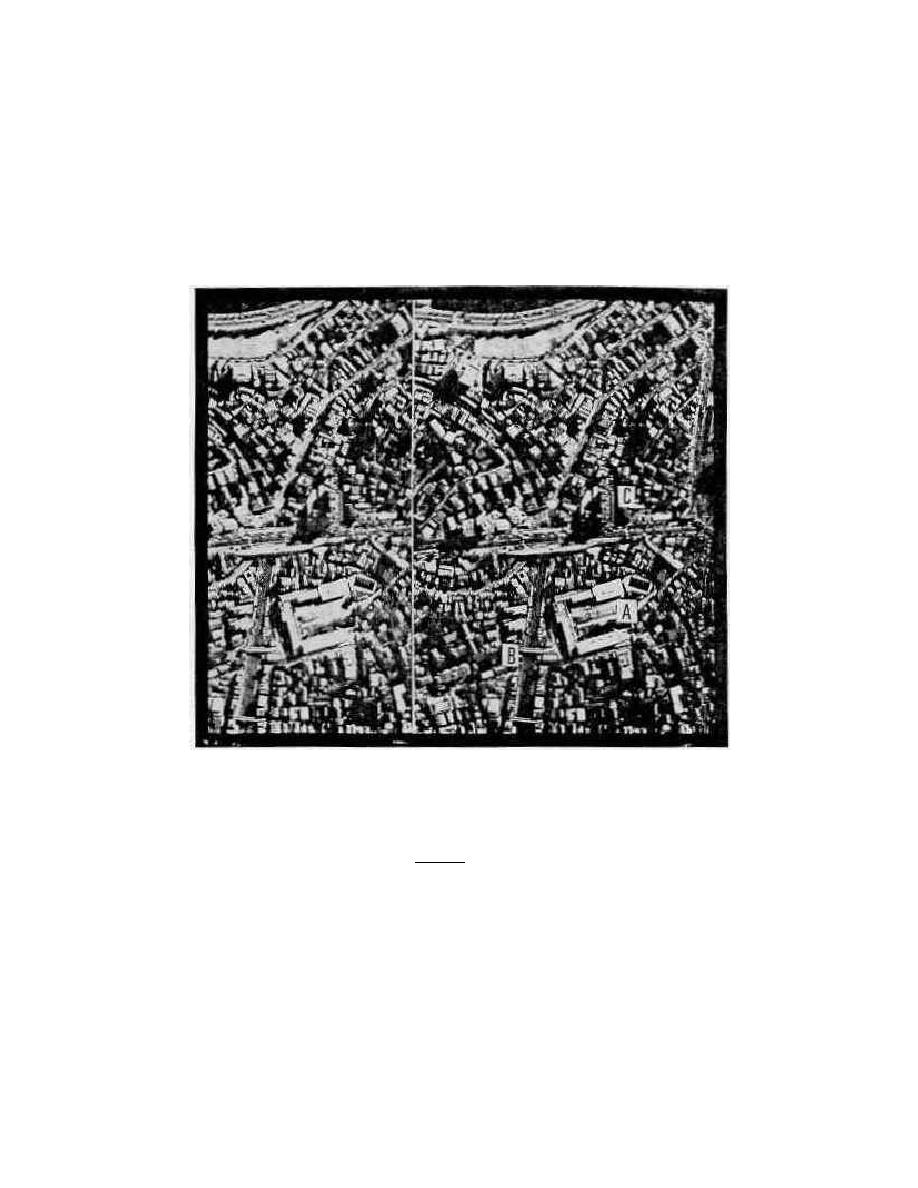
a. Civilian installations, such as cities, towns, or built-up areas, present no major
problems to the IA. Under wartime conditions, however, with the resources and economy
of a country geared toward the war effort, many activities require a second look, or closer
examination, to determine their use. Essential war materiel and equipment and the
facilities producing them are most often protected and secured by the military. What was
once an auto-producing plant becomes a factory for armored or wheeled vehicles. Figure
1- 8 shows typical civilian manmade features--Annotation A depicts an apartment or office
building, B shows overpasses across a main street, and C indicates several office
buildings.
NOTE: Knowledge of the situation and area is essential prior to analysis.
Figure 1-8. Typical Civilian Activity.
b. Military installations should be relatively easy to determine. Military posts,
camps, forts, supply installations, and training areas, have certain definite characteristics
associated with the military alone. You do not find, for example, the presence of motor
pools, parade grounds, ammunition storage facilities, armored vehicles, artillery weapons,
etc in a well-spaced or developed urban area. Furthermore, you would not associate a
grouping of tents, barbed wire, and vehicles in a field or in the woods with civilian
activities (Figure 1-9).


 Previous Page
Previous Page
